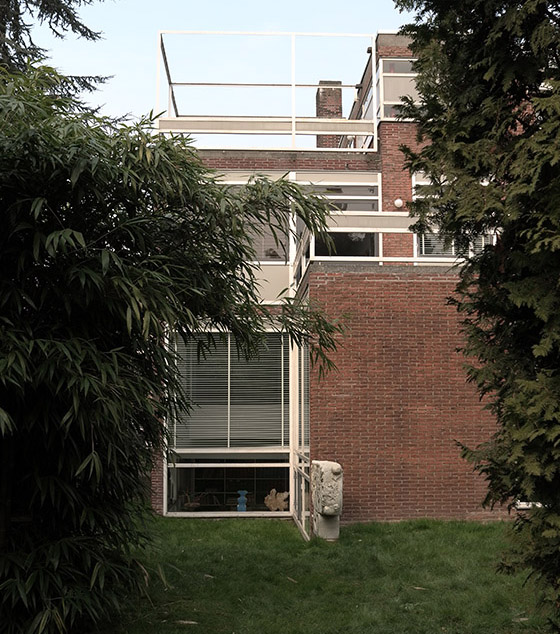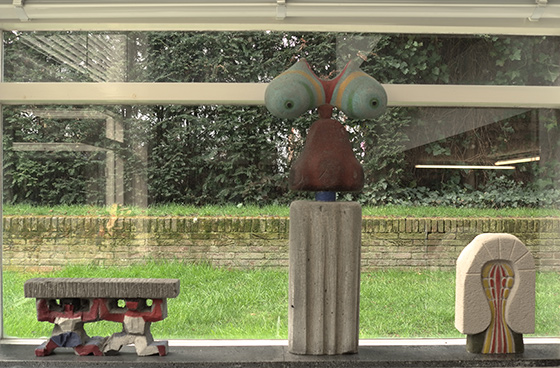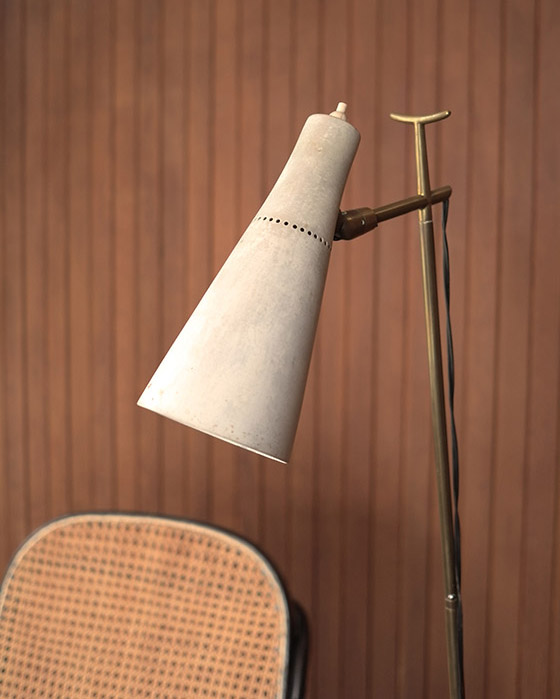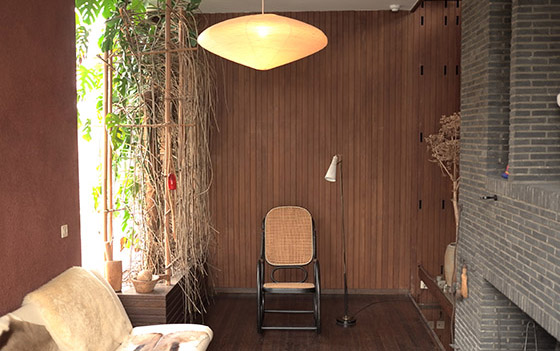Renaat Braem: Between Geometry and Fluidity
Text by Adam Štěch
Czech Republic
24.04.17
One of the leading architects of the 20th century, Renaat Braem combined a passion for expressive, fluid decoration with constructivist architecture at his private home and studio in Antwerp.
Renaat Braem's workspace at his former home in Antwerp, now a museum, is framed by a wall full of rare objects he collected from all over the world
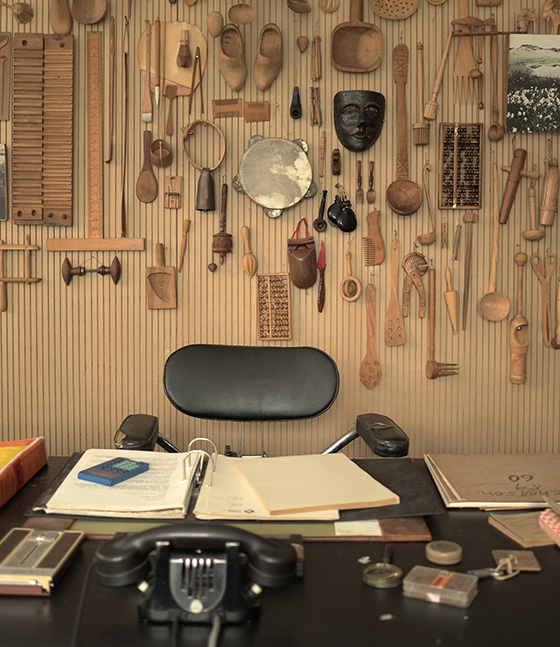
Renaat Braem's workspace at his former home in Antwerp, now a museum, is framed by a wall full of rare objects he collected from all over the world
×Renaat Braem (1910-2001), a 1935 graduate of the Royal Academy of Fine Arts in Antwerp, is one of the most notable figures in Belgian 20th century architecture. Between 1936 and 1937, he found himself working for Le Corbusier in Paris. There he explored the French master's sensibility for space and form. Whereas his early projects from before World War II were still rooted in a rectangular, formal language, his work from the 1950s slowly took on the softer forms of new organic approaches. This new work appeared on the scene at the same time that interest was growing in the concrete plasticity of later Brutalism. During the 1950s and 1960s, Braem combined his interest in expressive architectural forms with his bent for social responsibility. He completed a series of housing estates in Antwerp, including the Kiel neighbourhood (1951–1958) and the Arenawijk neighbourhood (1960 - 1965), in addition to other large-scale housing complexes in Leuven, Brussels and Boom.
Top: The back façade of Renaat Braem's home, which combines bricks and steel structure. Middle: Some of Renaat Braem's own sculptures in his former studio. Bottom: Akari lamp by Isamu Noguchi, Egg armchair by Arne Jacobsen

Top: The back façade of Renaat Braem's home, which combines bricks and steel structure. Middle: Some of Renaat Braem's own sculptures in his former studio. Bottom: Akari lamp by Isamu Noguchi, Egg armchair by Arne Jacobsen
×Meanwhile, Braem also built many private residences, including his own Antwerp home and studio. Built in 1958 on the city outskirts, the house, a rectangular box made of bricks, glass and steel, stands at the end of a line of family row houses. While the street facade of the house is a plain, simple wall of bricks and windows, the back of the house is a dynamic rectangular composition. It evokes early Soviet constructivist experiments as well as the spatial variability of Gerrit Rietveld's famous Schröder house in Utrecht, which was built according the principles of the progressive De Stijl movement. Braem's house exemplifies the fusion of several radical modernist ideas in construction and spatial ordering. It is a chameleon, a space where simple forms create an organic architecture through their unconventional spatial organisation, rather than using fluid, expressive forms.
The central hallway, containing the constructivist-like staircase, leads to both the L-shaped, double-high-ceilinged studio and the living area upstairs. The studio houses a few drafting tables and a large library. Overlooking the studio is the glazed office cabin where Renaat Braem used to sit behind his desk. His workspace is framed by wall full of the rare objects he collected all over the world. The upstairs living area is an open living space where the main living room freely flows into the dining and kitchen area and the terrace above the studio. Braem's house is like a constructivist sculpture, a three-dimensional painting of radical abstract geometry. Even the small details were designed according to the 1950s constructivist movement. Most notable is the main entrance. Renaat Braem’s name and the doorbell are framed by a beautifully coloured, abstract geometric decoration while the mailbox is an elaborate functional sculpture with sliding components for letters.
Rocking armchair by Thonet and Giuseppe Ostuni lamp (above) in living room
Braem retired from his work in the 1980s and lived in the house until he moved to a nursing home in 1997. His house was bequeathed to the Flemish community in 1999. Following the architect’s death in 2001, architects Willem Hulstaert and Walter Slock restored the house in collaboration with the architectural historian Jo Braeken. Since 2006, it has been as a museum that is open to the public by appointment. Four years later, the deSingel museum in Antwerp celebrated the centennial anniversary of Braem’s birthday with a large retrospective exhibition and the publication of a two-volume book on his work that examines Braem's place in European modernist architecture.
Text and Images: Adam Štěch

